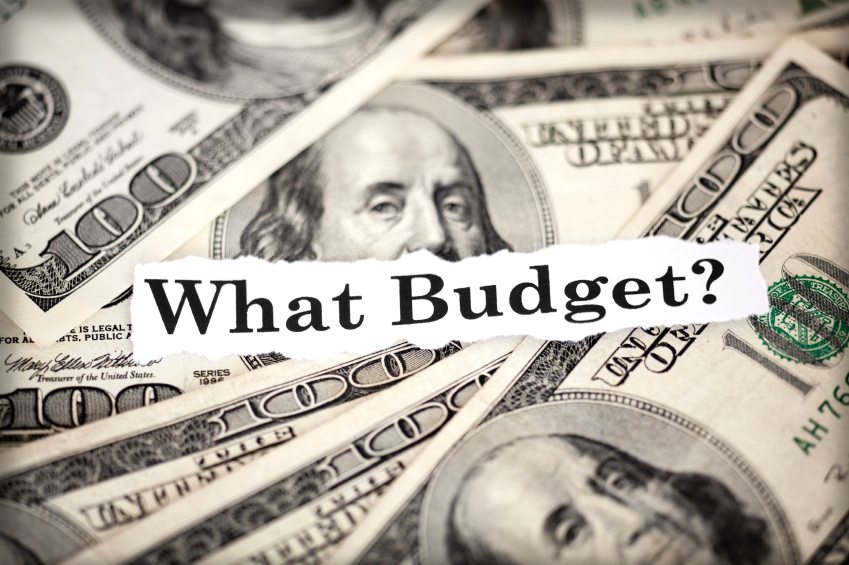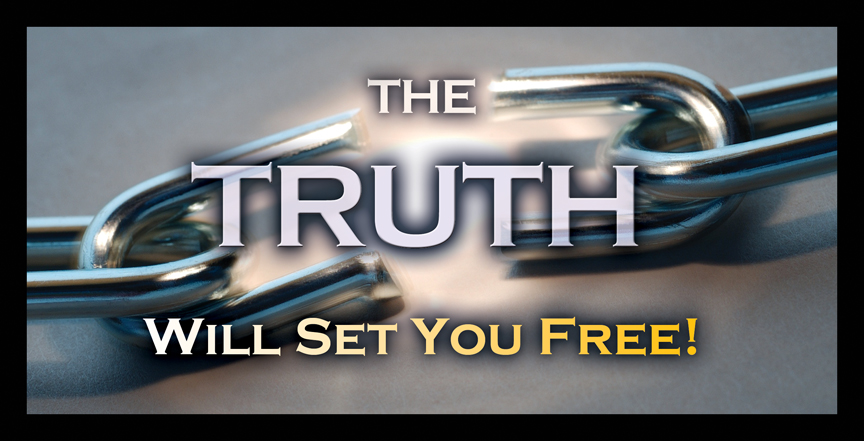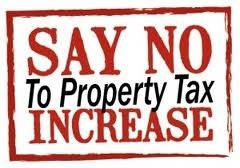
Hundreds of trillions
of dollars are controlled by the politicians and the bureaucrats in
little-known county, state and federal “slush” funds in every state in
the union and at the federal level. However, through book-keeping
gimmicks, the truth about these massive funds (which actually and
rightfully belong to the taxpayers) is being kept under wraps — with the
willing cooperation of the major media in this country.
Yet citizens
are being ROBBED with continuing tax hikes to finance day-to-day state
operations even while these hidden slush funds are bringing vast profits
to high-level international financial power brokers that benefit from
controlling this huge slush fund.

That’s
the astounding discovery made by veteran commodity trading advisor and
analyst Walter Burien.
The
best way to approach this is to give a chronological accounting of how I
became aware of what I call “the great American tax ROBBERY” Make no mistake, this is happening in all 50 states across the nation.
Let’s
go back to 1989. I was living in New Jersey and Gov. Jim Florio got
elected on a “no new taxes” platform. Yet, as soon as he got into
office, there was a $2.8 billion tax increase, the largest in the
state’s history. That created the proverbial “(bleep) hitting the fan”
and one of the local radio stations at that time, 101.5 FM, started
doing some rabble-rousing with the public for their input on government
waste and misspending and griping about the taxes.

On
the first day I listened to a lot of people talking about examples of
$5,000, $10,000, etc. The highest figure I heard was $85,000. I then
pulled out the budget report and called the show and read out the
billions of dollars that the state was dealing with and I pointed out
that the highest figure I heard had been $85,000 although the budget was
in the billions and if there was fraud and waste going on it was taking
place on tens of hundreds of millions of dollars.
The
radio show host challenged the listeners to start an organization to
repeal the tax increase.
Two days later 10 of us got together and I
incorporated a group called “Hands Across New Jersey” and within about
14 days we had our first rally in Trenton and about 115,000 people
converged on the city and just about shut the city down.
During
the time of organizing that rally, I started taking a look over the
budget revenue and finances of the state. Up until that point I thought I
was a pretty sharp cracker and knew what was going on and I always
figured that “the boys” were floating 5 to 10 percent of the revenue and
not reporting it to the public. When I looked I found out I didn’t have
the foggiest clue.

The
first thing I did was check the budget report and find the total cost
of all services. (This was 1989’s report.) They had $11 billion on
budget, $6 billion off budget, a total service budget of $17 billion. I
then checked the “net, available” on the budget report. That showed a
net available of $24, 648, 000, 000.
Then
I asked the question which is the first question that the IRS asks in
an audit: “What are the gross receipts?” I started adding that up and I
came up with about $44 billion. I said, “Wait. How can the state have a
service budget of about $17 billion, and showing a net available of
$24.6 billion, yet I was counting about $44 billion brought in for the
year in cash?”
I figured those reports had to be available someplace.
And
during that rally that followed, I knew about this $44 billion in cash
receipts and the budget of $17 billion. I briefed the public on the
difference between the budget and the gross receipts.
I
had about 15 people come up to me and ask if I wasn’t afraid of getting
“blown away” saying this on the steps of the New Jersey state capitol
building? I said, “No, but if I was one of the boys in a position of
trust, I’d give myself about three days. But since I am not one of the
boys in a situation of trust and confidence, they are going to start
asking how in the heck I figured this out and asking whom I had been
speaking to.”
After
the rally I said to myself that there was too much money not to be
accounted for under one book. My father was personnel manager for the
state treasury for about eight years and I had a pretty good knowledge
of how to get around and through the different state departments.
The
director of the budget, at that time, was on vacation until the
following Tuesday. I found out the names of his two lowest-level
assistants and I got the lowest one of them on the phone first and said,
“I’m working on a report for Richard [the budget director] and I have
to have it done by Tuesday I need all the figures on the autonomous
agency accounts, interest accounts, investment accounts,” and he says,
“Oh, you want the comprehensive annual financial report.” This was the
first time I ever heard of that in my lifetime. I said, “Yeh, how can I
get it?” He said, “Talk to Bill.” who was the next assistant.
I
called Bill, and said, “Hi, this is Walter Burien, I’m working on a
report for Richard. I just talked to Jim and I need the comprehensive
annual financial report.”

I
got the report that Friday. It showed liquid investment funds of $188
billion; common stock ownership of $70 billion; on loan to public and
private corporations, $10 billion; and insurance company equity
participation, $14 billion. This blew me away.
And
this was only the state of New Jersey. I realized that day, right on
the spot, what was going on. I also learned the definition of syndicated
organized crime that day.
Anything
that was a cost and an expense on service to the public — the
traditional side of the service budget, such as the Department of
Transportation, health and welfare, etc. — they left under the budget
report and the public footed 100 percent of the bill for 100 percent of
the services under the budget report. That was $17 billion.
Anything
that was a profit center-generated revenue (the Port Authority for New
Jersey, the New Jersey Turnpike, an investment account, etc.), or which
had the potential for generating revenue was totally restricted by
statute for no tie or inclusion whatsoever with the budget report.
This
is what was disclosed on the comprehensive annual financial report.
My
question to myself, as I said, was that question that the IRS asks:
What are the gross cash receipts? Here’s an example of what I
discovered: The 1989 figure in the comprehensive annual financial report
on page 174, under the Waste Water Treatment Trust Fund, shows a total
of all agency funds. On the “cash” line item they have the beginning
balance and ending balance. The beginning balance was $25,899,000,000. Their ending balance was $6,894,000,000.

Here
is the important part. It shows the additions and deduction, which is
the amount of the total cash receipts brought in for the year from all
state agencies and departments. The service budget was $17 billion.
Are
you ready for how much cash they brought in for the year? It was
$86,775,380,712. That was for 69 autonomous agencies, the budgetary
bases, investment accounts, etc.
I
immediately went down to radio station 101.5 and gave it to them. For
45 minutes they read out the bottom line figures. I suggested to the
listeners this example: suppose you reported your beginning checking
account balance at $5,000 at the beginning of the year and you put $40
million through your checking account and you ended your balance at
$3,500. That’s the game going on here.
On
the comprehensive annual financial report you looked through the spread
sheet on total revenues and it listed approximately $136 billion, but
if you look through the notes on the report, you find another additional
$60 billion. On the common stock ownership it listed $32 billion. But I
saw little asterisks that referred to a note and on that note it stated
that the accounting and balance was determined on purchase price, not
on market value.

In
other words, if they bought AT&T stock 30 years ago at $1.25 a
share and it’s worth $3,000 a share now, they still report it at $1.25 a
share. I checked my contacts to find out the true market value and it
equated to $70 billion.
And
these guys raised the taxes on the people of the state of New Jersey
when they could have paid them back twice the taxes and still had money
left over.
If
they had combined the entire operations owned by the state government
as a whole, they could have dropped all taxation in the state of New
Jersey and if they streamlined everything they could have had a dividend
check for every person in the state.
No wonder this is dangerous talk.
I
started investigating further. Everyone is familiar with the New Jersey
state turnpike and the Garden State Parkway. When they wanted to build
those authorities they had to put out a measure for voting upon by the
public. They said that they were going to put out a $7.5 billion bond
issuance and that they were going to build those authorities and that
they would be toll roads until the bonds were paid off.
And
until the bonds were paid off, the bondholders would be the owners of
that authority. Once the bonds were paid off, the authorities would
revert back into the budgetary basis as budgetary groups. They were also
restricted at operating for a profit. The public said okay and they
built these authorities.
Then
what they did was this: say they made a $400 million profit for the
year and the actual payment on the bonds was $100 million. They made the
$100 million payment for the bonds and took the $300 million and put it
into a bond surety escrow account for future liability payments. They
wrote it off as a line-item payment and did not declare it as an asset.
In
1990 when I checked on the total bond liability for the turnpike, it
was $14.5 billion. Guess how much was in the bond surety escrow
accounts? Thirty-eight billion. Enough to pay the bonds off three times
over.

The
same game was being played with all the autonomous agencies and the
bottom line is that they are dealing with hundreds of billions of
dollars and the control of those billions is what’s the motivating
factor, not the benefit of the public. The public is kept in the dark,
looking off in left field as they are doing business as usual in right
field.
So this is going on in other states, too?
Well,
after I found out about New Jersey, it dawned on me what the composite
total for all states and the federal government if this was happening
all over. I started looking and what I saw floored me.
Take
the composite total of city, county, state and federal of common stock
ownership. Across the country it comes out to in excess of $32 TRILLION...
That’s 53 percent of the entire open interest of all stocks issued. The state of California has in excess of $2.5 trillion in common
stock ownership. Yet, continually raises taxes across the board each and ever year.

So we really don’t have a national debt then?
They can’t pay it because they (say they) are restricted by statutes.
I understand that and it’s amazing.
To
explain what’s going on I can provide several examples. Everyone has
heard of Al Capone, the Chicago gangster. He ran a lot of legitimate
businesses including newspaper stands, flower shops, etc. He kept one
set of books for those legitimate businesses. Let’s equate those to the
budget report.
For
the other businesses (book-making, prostitution, drugs) he ran through
those newspaper stands and flower shops, he kept a second set of books
that he didn’t want anyone knowing about.
On
the comprehensive annual financial report (for the state of New
Jersey), the vast majority of revenue groups that the government doesn’t
want the public digging into is on the comprehensive annual financial
report. It’s like when you hear about the $5 TRILLION national debt
under the federal budget; but you don’t hear about the $30-PLUS TRILLION
in local and state liquid investment funds.
Is this information generally available to the public?
If
you know to ask for it. The state auditor generals or the state
treasurers offices of the states put the reports out. When I saw these
figures 10 years ago, I asked how the public couldn’t know about this.
But I found that every elected official I spoke to had never heard of
the comprehensive annual financial report. The one who did know was Sen.
Bill Bradley (D-N.J.).
I
showed him the report at a public gathering and he said, “You’ve got
that?” And he said, “See you later.” He didn’t want to get his picture
taken with that report. But other politicians denied knowing about the
report.

In
Arizona when I got the report for that state, there was a breakfast of
county supervisors and former Gov. Evan Mecham was there. I asked him
whether he knew of a report that consolidates all of the financial
material. He said, “No.” I asked him if he had ever heard of the
comprehensive annual financial report and he said, “No.” Then I produced
it and said, “Here it is. This is the same report you signed when you
were in office. Here’s your signature on the front page.” And he said,
“Oh I thought you were talking about another year.” I said, “Uh-huh.”
Do
you think he knew what was in the report when he signed it or did some
faceless bureaucrat give him the front page to sign and then take it
away?
You’ll
have to give him some truth serum to actually find out what he really knows. Here’ s
another example: every person should imagine himself the state
government of New Jersey. Your salary is $50,000 year and your budget
for operating your house is $3,500 per year. You could audit your budget
100 times over. If you spent $4,000 this year on your house and you
only had $3,500 allocated, you could go to your neighbor and ask for
$500. So what’s happened is that structure has been created to allow the
gross receipts to be totally hidden from the reality of what’s reported
on the budget report.

I
want to congratulate www.bobbyanding.com for disseminating, to the public, the TRUTH about the Comprehensive Annual Financial report.
The more Americans, who are aware of the shell game, local and state governments are playing with tax payers money; the better informed voters will be the next time they go to the polls.
Article written by
Walter J. Burien,
WalterBurien@CAFR1.com
CAFR1.COM
P. O. Box 2112, Saint Johns, AZ 85936
Telephone: (928) 458-5854
P. O. Box 2112, Saint Johns, AZ 85936
Telephone: (928) 458-5854
Voice 1(520) 717-1994

